Description
Package Title: Pratt & Cornely Test Bank
Course Title: Pratt & Cornely
Chapter Number: 8
Question type: Multiple Choice
1) What are the characteristics of most unsaturated fatty acids found within a human cell?
- A) protonated carboxylic acid and trans double bonds
- B) deprotonated carboxylic acid and trans double bonds
- C) protonated carboxylic acid and cis double bonds
- D) deprotonated carboxylic acid and cis double bonds
- E) none of the above
Answer: D
Difficulty: Easy
Section Reference: 8-1
Learning Objective: Recognize the physical characteristics of lipids
2) Which of the following is considered an omega-3 fatty acid?
- A) 9,12-Octadecadienoic acid
- B) 9,12,15-Octadecatrienoic acid
- C) 6,9,12-Octadecatrienoic acid
- D) 8,11,14-Eicosatrienoic acid
- E) 5,8,11,14-Eicosatetraenoic acid
Answer: B
Difficulty: Medium
Section Reference: 8-1
Learning Objective: Recognize the physical characteristics of lipids
3) The major lipid component of cell membranes are _____.
- A) triacylglycerols
- B) cholesterol
- C) glycerophospholipids
- D) plasmologens
- E) gangliosides
Answer: C
Difficulty: Easy
Section Reference: 8-1
Learning Objective: Recognize the physical characteristics of lipids
4) Which of the following alcohols is esterified to the phosphate group of glycerophospholipids?
- A) choline
- B) ethanolamine
- C) glycerol
- D) serine
- E) all of the above
Answer: E
Difficulty: Medium
Section Reference: 8-1
Learning Objective: Recognize the physical characteristics of lipids
5) The most notable difference between _____ and other lipids is the presence of four fused rings.
- A) cholesterol
- B) arachidonic acid
- C) gangliosides
- D) plasmologens
- E) triacylglycerols
Answer: A
Difficulty: Easy
Section Reference: 8-1
Learning Objective: Recognize the physical characteristics of lipids
6) Which of the following terms describes all glycerophospholipid?
- A) zwitterionic
- B) amphipathic
- C) nonpolar
- D) amphoteric
- E) none of the above
Answer: B
Difficulty: Medium
Section Reference: 8-1
Learning Objective: Recognize the physical characteristics of lipids
7) Which of the following is the primary building block for the synthesis of molecules like cholesterol or ubiquinone?
- A) acetyl-CoA
- B) palmitic acid
- C) choline
- D) isoprene
- E) sphingosine
Answer: D
Difficulty: Medium
Section Reference: 8-1
Learning Objective: Recognize the physical characteristics of lipids
8) A type of lipid that commonly forms a waterproof barrier and is composed of a fatty acid and a fatty alcohol is called a _____.
- A) terpenoid
- B) ganglioside
- C) capsaicin
- D) steroid
- E) wax
Answer: E
Difficulty: Easy
Section Reference: 8-1
Learning Objective: Recognize the physical characteristics of lipids
9) Which of the following vitamins is derived from cholesterol?
- A) vitamin A
- B) vitamin D
- C) vitamin E
- D) vitamin K
- E) none of the above
Answer: B
Difficulty: Medium
Section Reference: 8-1
Learning Objective: Recognize the physical characteristics of lipids
10) What two molecules are used in the synthesis of sphingosine?
- A) arachidonic acid and serine
- B) stearic acid and isoprene
- C) palmitic acid and choline
- D) linoleic acid and isoprene
- E) palmitic acid and serine
Answer: E
Difficulty: Medium
Section Reference: 8-1
Learning Objective: Recognize the physical characteristics of lipids
11) Which of the following explains why free fatty acids do not form bilayers?
- A) the width of the polar head is greater than the nonpolar tail
- B) the width of the polar head is less than the nonpolar tail
- C) the width of the polar head is equal to the nonpolar tail
- D) the width of the nonpolar head is greater than the polar tail
- E) the width of the nonpolar head is less than the polar tail
Answer: A
Difficulty: Medium
Section Reference: 8-2
Learning Objective: Describe the properties of the lipid bilayer
12) As temperatures grow colder with the onset of winter, animals will adapt by changing the fatty acid composition of cell membranes. What characteristics of fatty acids will be seen?
- A) longer chains with greater unsaturation
- B) longer chains with greater saturation
- C) shorter chains with greater unsaturation
- D) shorter chains with greater saturation
- E) chain length and saturation do not change in a cell membrane
Answer: C
Difficulty: Medium
Section Reference: 8-2
Learning Objective: Describe the properties of the lipid bilayer
13) A membrane raft is a(n) _____ in the lipid bilayer of a cell membrane.
- A) transmembrane protein
- B) integral membrane protein oriented to the intracellular side
- C) integral membrane protein oriented to the extracellular side
- D) region of high cholesterol and sphingolipid content
- E) none of the above
Answer: D
Difficulty: Medium
Section Reference: 8-2
Learning Objective: Describe the properties of the lipid bilayer
14) Which of the following is true regarding membrane asymmetry?
- A) transverse diffusion occurs very quickly
- B) lateral diffusion occurs very slowly
- C) a flippase causes lateral diffusion to occur very rapidly
- D) carbohydrates attached to membrane lipids are usually found on the cytosolic side of the membrane
- E) none of the above
Answer: E
Difficulty: Medium
Section Reference: 8-2
Learning Objective: Describe the properties of the lipid bilayer
15) In an a-helical protein that spans a cell membrane, _____ would likely be in the center of the membrane while _____ would likely be associated with the polar head groups and _____ would likely be associated with the aqueous environment
- A) Trp; Asn; Ala
- B) Leu; Gln; Asp
- C) Tyr; Glu; Gly
- D) Ile; Arg; Gln
- E) Val; Ser; Thr
Answer: B
Difficulty: Hard
Section Reference: 8-3
Learning Objective: Explain how proteins associate with membranes
16) Which of the following statements describes integral membrane proteins?
- A) they never completely span the lipid bilayer
- B) they are easily removed by changes in pH or high salt
- C) amino acids that contact the core of the membrane are hydrophobic
- D) they tend to be water soluble
- E) their association with the membrane is through an attached fatty acyl or prenyl group
Answer: C
Difficulty: Medium
Section Reference: 8-3
Learning Objective: Explain how proteins associate with membranes
17) If a transmembrane domain of protein contains b-sheet structure, the overall structure of the transmembrane portion is likely a ____________.
- A) b-barrel
- B) b-tube
- C) b-turn
- D) b-helix
- E) none of the above
Answer: A
Difficulty: Easy
Section Reference: 8-3
Learning Objective: Explain how proteins associate with membranes
18) Which fatty acid is commonly attached to proteins to allow membrane localization?
- A) eicosapentaenoic acid (EPA)
- B) arachidonic acid
- C) linoleic acid
- D) myristic acid
- E) farnesylic acid
Answer: D
Difficulty: Medium
Section Reference: 8-3
Learning Objective: Explain how proteins associate with membranes
19) If polar amino acids are found in a membrane spanning a-helical region, they are most likely _____.
- A) mutations
- B) modified with nonpolar groups by prenylation, methylation and/or acylation
- C) hydrogen-bonded to other polar amino acids to prevent interaction with the membrane lipids
- D) hydrogen-bonded with hydroxyl groups of the membrane fatty acids
- E) none of the above
Answer: C
Difficulty: Hard
Section Reference: 8-3
Learning Objective: Explain how proteins associate with membranes
20) Which of the following is a characteristic of integral membrane proteins?
- A) most of their movement is by lateral diffusion
- B) transverse diffusion occurs often but rather slowly
- C) interactions between proteins makes the membrane highly rigid
- D) all have carbohydrates attached to the extracellular domain
- E) none of the above
Answer: A
Difficulty: Medium
Section Reference: 8-4
Learning Objective: Summarize the features of the fluid mosaic model
21) The carbohydrate portion of a membrane spanning glycoprotein is found _____.
- A) spanning the membrane
- B) on both the cytoplasmic and extracellular sides of the membrane
- C) only on the cytoplasmic side of the membrane
- D) only on the extracellular side of the membrane
- E) carbohydrates are not found on membrane spanning glycoproteins
Answer: D
Difficulty: Medium
Section Reference: 8-4
Learning Objective: Summarize the features of the fluid mosaic model
22) Which of the following aspects of membrane protein movement is explained by the fluid mosaic model?
- A) proteins that are immobile are often esterified to cholesterol via an Asp residue
- B) proteins that are mobile only in a small area are sequestered by proteins attached to the cytoskeleton
- C) proteins that freely diffuse through the membrane often undergo flip-flopping
- D) proteins confined to a lipid raft are linked to phosphatidylserine via and amide bond
- E) none of the above
Answer: B
Difficulty: Hard
Section Reference: 8-4
Learning Objective: Summarize the features of the fluid mosaic model

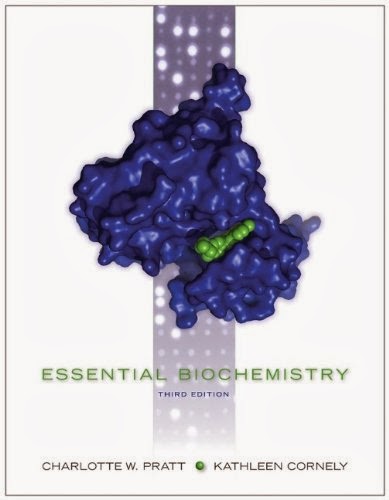
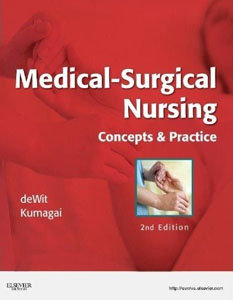
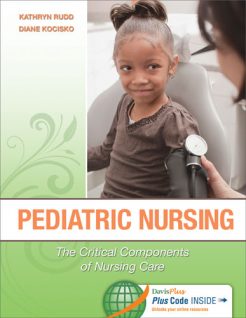
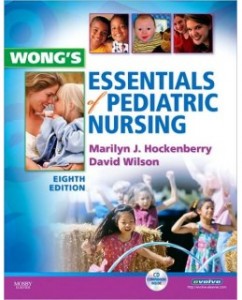
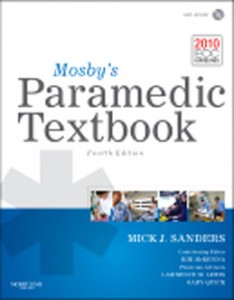

Reviews
There are no reviews yet.